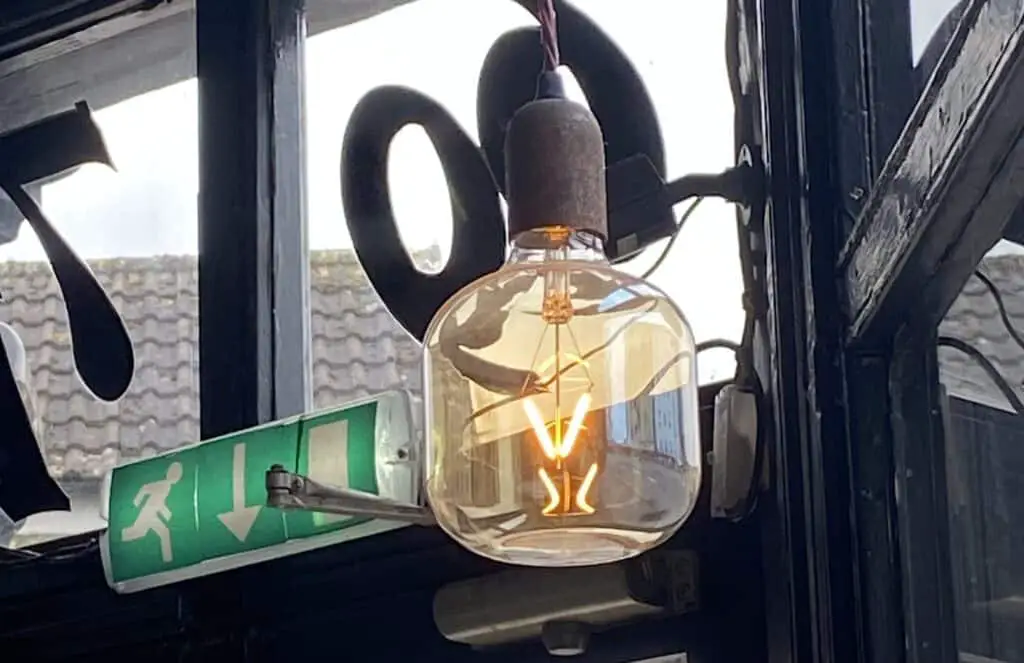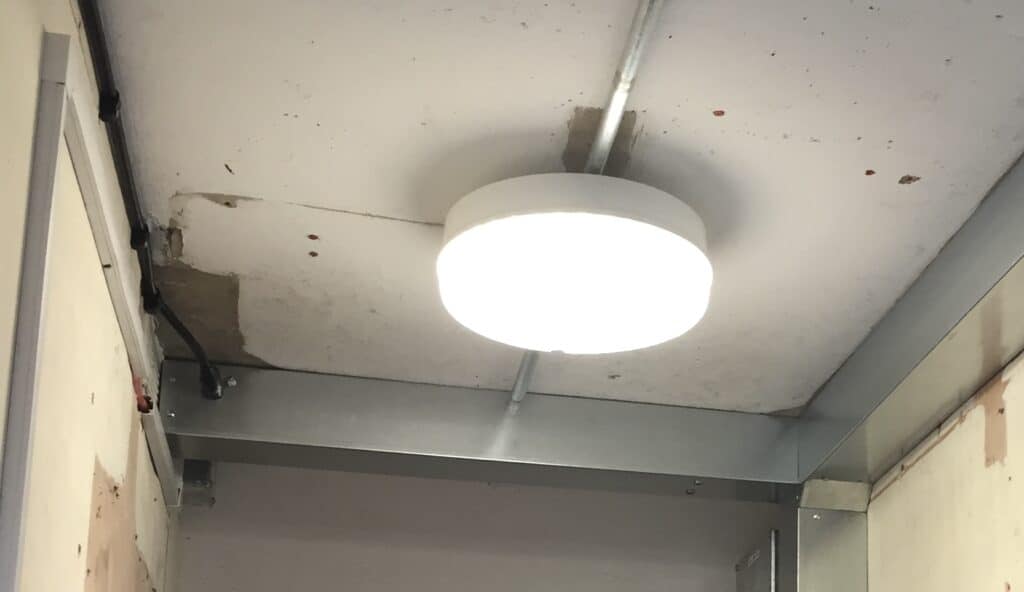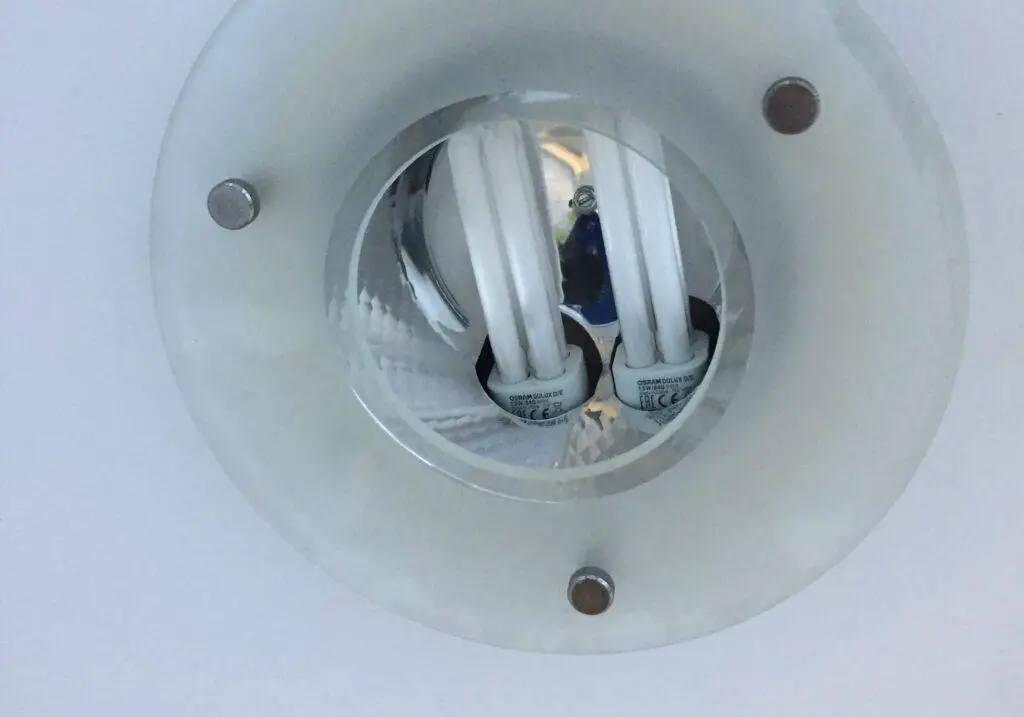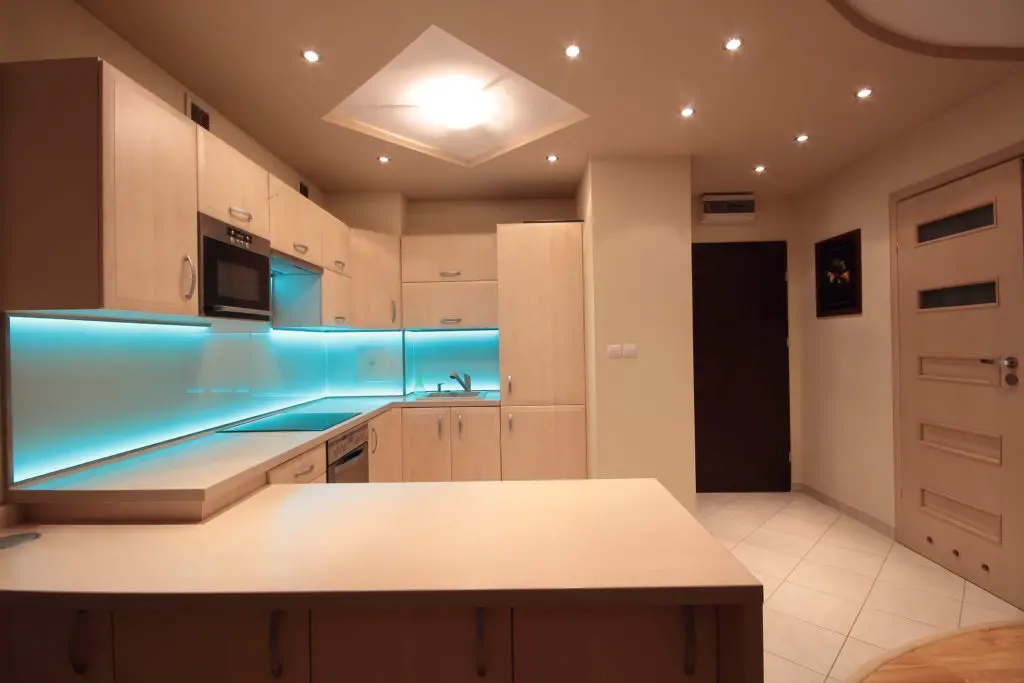LED lights have numerous well-documented advantages. Not only do they use around 75% less energy than their incandescent bulb predecessors, but they also produce considerably less heat, which is a good thing in lighting design and also for minimising bug and insect attraction.
Although LED lights produce less heat than traditional light bulbs they still produce a high amount of heat that can cause issues in our lighting systems. This unwanted heat (it is unwanted as all we want is light from the LEDs, the heat is just a wasted by-product) can cause damage to the lights and reduce their lifespan.
Overheating can cause the LED lights to dim or fail entirely, reducing their lifespan and requiring costly replacements. Fortunately, in my career as an electrician, I have discovered there are several ways to mitigate this issue and prolong the life of your LED lights. In this article, we will discuss some simple and easy tips on how to reduce heat from LED lights, ensuring they remain durable and efficient.

The best methods to reduce heat from LED lights are to improve ventilation and select the appropriate size and wattage light fittings for the area. Heat sinks and restricting current passing through the LEDs are other ways to reduce heat although these methods are not so easy to retro fit.
Before we look at how to reduce the heat produced by LED lights, we need to quickly touch on how LED lights work in order to understand where this unwanted heat comes from so we know how to deal with it.
A Very Brief Understanding of How LED Lights Work
LED stands for Light Emitting Diode. It is a semiconductor device that emits light when an electric current is passed through it. Unlike traditional incandescent bulbs, which use a filament to produce light, LED lights use a small chip made of semiconductor material, such as gallium arsenide or gallium nitride. When an electric current is passed through the chip, it excites the electrons in the material, causing them to emit photons of light.
LED lights are highly efficient because they convert most of the energy they consume into light, rather than heat. This is in contrast to traditional incandescent bulbs, which convert most of the energy they consume into heat, rather than light. As a result, LED lights consume less energy and produce less heat than traditional bulbs.
Why LED Lights Produce Heat
Despite their high efficiency, LED lights still produce a significant amount of heat. This is because not all of the energy they consume is converted into light. even in LED lights, heat is still an unwanted by-product. This heat around the LED can cause the chip to overheat. As with all electronic equipment, overheating is a major issue and is responsible for the failure of many beloved electronic devices.
In an attempt to combat this issue, LED lights are equipt with a heat sink to dissipate the heat they produce away from the chip. Without this heat sink, the LED chip would not last very long. A heat sink is a device that absorbs and dissipates heat away from the LED chip and is typically made of a material with high thermal conductivity, such as aluminium or copper.
Another factor that contributes to the heat produced by LED lights is their operating temperature. LED lights are designed to operate within a specific temperature range. Most lighting is designed to operate at up to 25 degrees Celsius. this means that if the ambient temperature around the light rises above this, the LED will struggle to operate correctly.

This was a consideration for me recently when I was asked to design a lighting system for a polytunnel (which is effectively a greenhouse) As I knew the temperature range would exceed what standard fittings are designed to withstand, I needed to source and specify some high temperature LED light fittings that could operate in a range up to 50 degrees Celsius (these ones for those interested)
Consequences of Excessive Heat on LED Lighting
So we know that LEDs produce heat, and are designed to cope with it to some extent. However, too much heat build-up can have serious consequences that cannot be ignored. Taking heat into consideration is a major factor in lighting design.
If LEDs are overheating and we need to use one of the methods to fix them further down the post, then something has gone wrong at the design stage. Here are a few of the problems that will occur if excessive heat is allowed to persist with LED lights.
Heat Reduces the Lifespan of LED Lights
One of the most significant consequences of excessive heat on LED lights is reduced lifespan. High temperatures can cause the LED chip to degrade faster, leading to a shorter lifespan of the LED light. The lifespan of an LED light can be reduced if the operating temperature exceeds the recommended range.
It’s important to note that the lifespan of LED lights is also affected by other factors such as the quality of the LED chip, the driver, and the overall design of the light fixture. If the light fixture is of poor quality and design, it is unlikely to be able to efficiently dissipate the heat.
Excessive Heat Leads to Decreased Light Output of the LED Lights
Higher temperatures generally reduce light output. In warmer environments and at higher currents, the temperature of the semiconducting element increases, which results in a decrease in light output. This decrease in light output can be significant and can affect the brightness and quality of the light.
It’s important to ensure that the LED light is operating within the recommended temperature range to maintain optimal light output.

Overheating LEDs Cause Significant Safety Risks
Excessive heat can also pose safety risks. If the LED light is not designed or installed properly, the heat generated by the LED can cause damage to the surrounding area or even start a fire. The classic example of this I have seen is spotlights installed in an attic that has then been covered with thermal insulation.
Most lights are not designed to be installed this way. The insulation leaves the light unable to dissipate its heat and a real fire safety risk is present. It’s vital to ensure that LED lighting is installed correctly and that the heat generated by the LEDs is dissipated properly to avoid any safety risks.
The Best Ways to Reduce Heat from LED Lights
Proper Ventilation and Airflow are Vital to Reduce LED Heat
One of the simplest ways to reduce heat from LED lights is to ensure proper ventilation and airflow. Good ventilation helps to dissipate heat from the LEDs and prevents overheating. Most people with computers have heard the familiar sound of a fan kicking in to cool the electric circuit components down. Airflow is a simple but effective method.
To achieve this with lighting, ensure the correct light fittings are chosen for the correct environment as some lights need more ventilation and airflow than others. As mentioned earlier, I had to investigate the different types of lights needed for a specific situation where ambient heat would be an issue. Reading the manufacturers’ information for the lights you are choosing is vital to help pick the correct ones.
Leaving space around LED lights to allow air to flow is also essential. For example, don’t put a light on a wall that is not designed to be mounted there. This would restrict the airflow and make the light work harder to dissipate the heat.
Heat Sinks and Thermal Pads Reduce Heat in LED Lights
Another effective way to reduce heat from LED lights is to use heat sinks and thermal pads. Heat sinks are designed to absorb and dissipate heat from the LED lights, while thermal pads help to transfer heat away from the LEDs.
You can install heat sinks and thermal pads on the back of the LED lights to reduce the temperature of the LEDs. Make sure to choose the right size and type of heat sink and thermal pad for your LED lights.
For anyone considering this option, it is best to consult with a qualified electrician first to discover the root problem and if the issue requires greater attention.

Using Dimmers or PWM Controllers to Minimise LED Heat
Using dimmers or PWM controllers can also help to reduce heat from LED lights. Dimming the LED lights reduces the amount of power they consume, which in turn reduces the amount of heat they generate. PWM controllers use a technique called pulse-width modulation to regulate the amount of power supplied to the LED lights, which also helps to reduce heat.
I’ve not retrofitted PWM controllers to any lighting as this is more component-level than I would typically get down to. I have, however, fitted plenty of dimmer switches and in my experience dimmer switches work well, providing the correct type is chosen.
LED lights require LED dimmer switches or they will not operate correctly. Again, consult a local electrician to have them ensure that the correct dimmer or PWM controller is chosen.
Lower Wattage Lights can Reduce Excessive LED Heat
LED lights with lower wattage and lower colour temperature generate less heat than those with higher wattage and higher colour temperature. LED lights with high-quality components and good thermal management are also less likely to generate heat.
This comes back to carrying out the right lighting design before the project begins. It can seem tempting at the time to install cheaper light fittings, or to opt for the most powerful fittings available, but good lighting design is about balancing sleek looks with correct functionality at a reasonable price point.
The dangers presented by excessive heat from LED lights should not be underestimated. I would always advise seeking the advice of a local qualified electrician to inspect your lights and advise on the best way methods to rectify any potentially dangerous faults.

